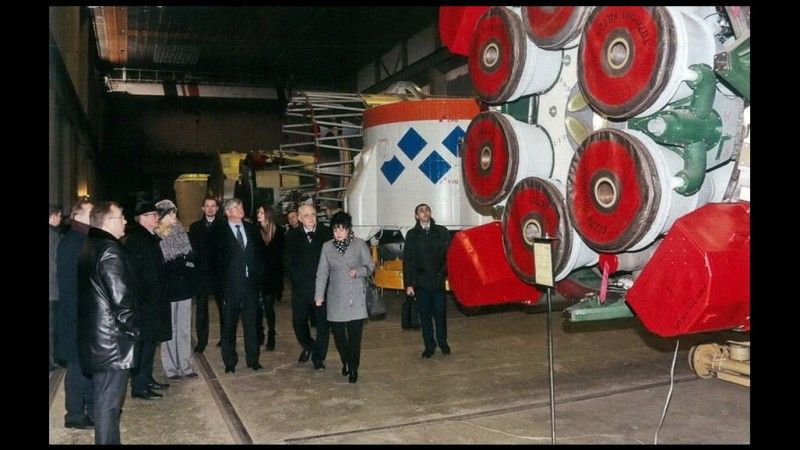Institute of Aviation Proposes That A Polish-Ukrainian Launch Vehicle Should Be Constructed [Space24]

During their visit to Ukraine, the delegates of the Polish Space Agency, along with the representatives of the Warsaw Institute of Aviation, have presented their proposal regarding collaboration, within the scope of creating a joint Polish Ukrainian launch vehicle that could be used to place small satellites into the orbit - informs Institute of Aviation. During the talks, involving the representatives of the Ukrainian State Space Agency, Yuzhmash facility and Yuzhnoye design bureau, possible options regarding construction of such rocket were discussed.
During their visit to Ukraine, the delegates of the Polish Space Agency, along with representatives of the Institute of Aviation have presented their proposal regarding collaboration, within the scope of creating a joint Polish Ukrainian launch vehicle that could be used to place small satellites into the orbit - informs Institute of Aviation. Institute was represented during visit in Ukraine by professor Piotr Wolanski, and Director of the Space Technologies Centre, Leszek Woroch PhD, Eng.,
The above refers – most probably – to the design proposed by the Institute of Aviation – a rocket that could place the satellites into a sun-synchronous orbit. The mass of the satellites that could be possibly placed in the outer space would range from 100 to 250 kilograms. Currently, no similar system exists in Europe, while small satellites are usually carried as a smaller, extra payload, with the use of the launch vehicles used to launch heavier payload into the orbit. Nonetheless, this solution is quite expensive, and the waiting queue regarding the potential launch slot is quite long. A launch vehicle designed for small satellites could be an alternative option here. It would additionally provide Poland with a certain degree of independence, when it comes to the process in which the satellites are launched.
Such capabilities may be based on the technologies that have been in development at the Space Technologies Center of the Institute of Aviation since several years – here, we mean the research related to high-energy “green” rocket propelling systems based on high concentration hydrogen peroxide (98.5%), or the ILR-33 Bursztyn [Amber] rocket, which is a related development. The Bursztyn rocket is going to, according to the plans, reach the altitude of 100 kilometres, similarly as the Meteor weather surveying rockets designed by the Institute of Aviation in the 1960s. In the future, the technologies that will be tested during the Bursztyn programme, could be used to create a three-staged satellite launch vehicle.
The Ukrainian facilities are in possession of considerable experience in the field of rocket design. During the period when the Soviet Union still existed, Dnepropetrovsk facility dealt with production of the R-36M (NATO Codename: SS-18 Satan) and RT-23 (NATO Codename: SS-24 Scalpel) ballistic missiles. Currently Zenith, Cyclone and Dnepr families of launch vehicles are being manufactured in at the facility based on the banks of the Dnieper river. These designs are based on the R-36M2 ICBMs. The plant also manufactures engines for the European Vega rockets.